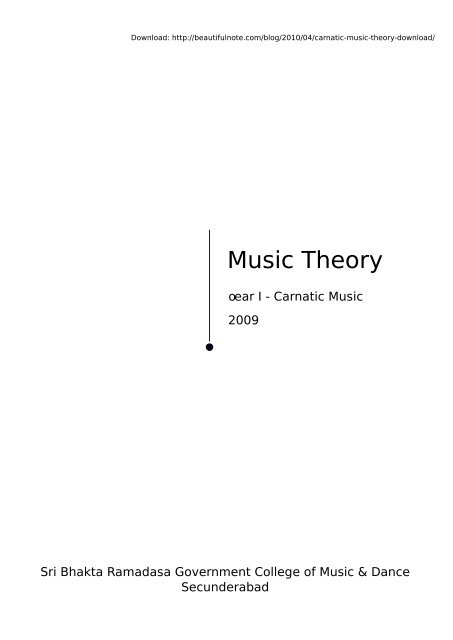
For an extreme improvisation example, some performers have utilized this form for 20+ minutes on a single piece. It will usually take place after the primary composition has been played for the concert. This improvisation refers to the extension of a solo that is being performed by a percussionist. Performers may be asked to perform a solo piece during a concert performance.
#CARNATIC MUSIC THEORY NOTES FULL#
A full improvisation using this form will including phrasing, variation, and tempo alterations. It will only last for a single cycle in most circumstances, but can be repeated twice or more, depending on the phrases of the ragam. This improvisation occurs on the thematic lines of a song. It may include elements of tanam and pallavi as well. It is most often used within a long-form concert setting. This form of improvisation expands the syllables of the raga.įor this improvisation method, the performer will typically compose what will be played ahead of time. For many who learn Carnatic music theory, this is the first improvisation that will be taught. Lyrical improvisation is part of this process as well. This improvisation method uses passages to enhance expression, using melody and rhythm. Different speeds are possible with this improvisation style as well. This improvisation sings a line or two of a song’s lyrics repeatedly while performing improvised melodic improvisations simultaneously. It is like producing a thought sequence during a conversation, but with music instead of words. The raga acts as the foundation for creativity. This is a slow improvisation without rhythm. There are several varieties of improvisation that are recognized by this musical theory, but there are 7 traditional forms that are typically used. Without improvisation, it could be argued that the music being played is not truly Carnatic. Improvisation is one of the most important elements of Carnatic music. How Improvisation Fits into Carnatic Music Theory There are different combinations which can be used, however, which leads compositions to be grouped based on their tala. Unlike in other forms of musical theory, the tala is rarely changed within a composition. It is a fixed-time cycle which prescribes a specific number or grouping of beats. This is the fixed time of the composition. Raga can be divided into two classes: parental and descendant. Which phrases should be included or avoided are part of this element as well. This is a set of rules that is used for building a melody within Carnatic music theory, similar to the idea of using a “mode.” Rules are set in place that dictate upward or downward movements, referred to as “aarohanam” and “avarohanam” respectively. The 7 notes are referred to as “sa,” “ri,” “ga,” “ma,” “pa,” “da,” and “ni.” There are 7 notes in a basic octave scale from which to work, similar to other forms of music, though there are variants that can modify the form of it. It will define the position, either higher or lower, of a note instead of a specific frequency. This is the musical sound of a single note. There are 22 total sounds that can be distinguished by listeners, though many converge upon themselves, creating a musical expression within the mind. Graded pitches within an octave are common. Similar in some ways to the “key” of a piece, it is the note to which all other notes will be derived. This is the musical pitch of a composition. In addition to the raga and tala, there are two additional important elements that can be found within the Carnatic music theory. It is a singing style that is called “gayaki,” resting on two primary elements: the modes (or raga) and the melodic formula (or tala), which creates the rhythmic cycle of the music.

The compositions are designed to be sung, even if being played on instruments.

In Carnatic music theory, the primary emphasis is on vocals.


 0 kommentar(er)
0 kommentar(er)
